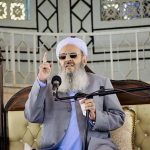 Tajikistan is the Muslim post-Soviet republic on the Northern board of Afghanistan. During the last 20 years and after collapse of the USSR, this small young state has demonstrated four unique phases of very contradictory and tangled interaction between a secular government and politically loaded Muslim community.
Tajikistan is the Muslim post-Soviet republic on the Northern board of Afghanistan. During the last 20 years and after collapse of the USSR, this small young state has demonstrated four unique phases of very contradictory and tangled interaction between a secular government and politically loaded Muslim community.
History of Conflict
Most of Tajikistan’s population is Sunni Muslim and belongs to the Persian-speaking Tajik ethnic group, who share language, culture and history with Afghanistan and Iran. The Muslim warriors conquered the region in 644. The process of spreading Islam in the region has turned out to be very long and difficult.
In several centuries the Samanid Empire has supplanted the Arab Muslims from this region and enlarged the cities of Samarkand and Bukhara, which became the cultural centers of Persian-speaking Sunni Muslims of that region. At that time the key role in spreading Islam and developing Muslim culture during history of region has been played by the Sufi tariqahs (Islamic religious orders).
The biggest and most known tariqahs in Tajikistan till now are Naqshbandiyah, Kubrawiyah, Qadiriyah and Yasawiyah. Also, in Tajikistan’s mountainous region that is difficult to access lives an Isma’iliyah community. The number of Isma’ilis there is about 200 thousand people, which forms about 3 percent from the total population of Tajikistan.
Occupied in the nineteenth century by Russian Empire, Tajikistan became a constituent republic of the Soviet Union after the Russian Socialist Revolution in 1917. During the Soviet period the Communist Party of the USSR started oppressing Muslims and created a new Tajik elite and intelligentsia – secular, atheistic and hostile to Islam.
However, during all the Soviet period Islam has continued to have a very deep and strong influence on the Tajik society. That is why the only legal Islamic political party all over the post-Soviet territory – the Party of Islamic Revival – has appeared in Tajikistan a year after the USSR collapsed in 1991. After Tajikistan became an independent state the main struggle for power started between the secular elite and the Islamic opposition.
Phase One: Civil war
This struggle finally has led Tajikistan to a civil war that burst out in 1992. By its nature, this war was the armed conflict between different clans within one Tajik nation. But the parties in this war turned out to be divided by deep political and ideological chasm – between the adherents of a secular government and adherents of the United Tajik Opposition (UTO).
The UTO consisted of different opposition groups to the government – national-democratic and Islamic. But the strongest group within the UTO was an Islamic one, ruled by the Party of Islamic Revival (PIR). The leader of the PIR, Said Abdullo Nuri, at that time became the most influential Tajik opposition politician and a spiritual leader.
The reasons which led Tajikistan to Civil war were the poor economic situation and the deep split of Tajik society between different regional clans, some of which supported the ex-communist elite of Tajikistan, and others supported national-democratic and Islamic opposition groups.
The influence of the Islamic party in this conflict was so strong that Muslims became the most battle worthy fighters in the war. And Nuri, the leader of the PIR, led the UTO. This war continued till 1997 and carried away by different estimates about 80 to 150 thousand lives.
Phase Two: Reconciliation
After five devastating years of civil war, the parties of the conflict sat around the negotiation table. In this peacemaking processes the key mediatory role was played by Russian government. But the conflict was so tough that Kremlin managed to initiate a negotiation process after its ninth attempt.
It is worthy to note that the peace treaty between government and UTO was signed by the President of Tajikistan Emomali Rahmonov and Nuri, the leader of the PIR and UTO.
The main result of that treaty was that the parties of conflict established the National Reconciliation Commission (NRC) in 1997. This NRC was led also by Nuri. According to this treaty the opposition got 30 percent of the positions in different governmental structures and 25 percent of the positions in the Central Electoral Commission.
Then the NRC adopted an act on mutual forgiveness which guaranteed freedom and safety for all the parties that were engaged in the civil war. Two years later, the Supreme Court of Tajikistan abolished a law on the prohibition of the activity of the UTO’s political parties and media.
Phase Three: Stifling
As a result of the peace treaty and the NRC, Tajikistan for several years became the most democratic state in Central Asia. Muslim communities and Islamic parties got wide freedom in their activities.
The PIR till now is the only legal Islamic political party in all post-Soviet countries. On the year of signing the treaty the President of Tajikistan ex-communist Rahmonov went to Mecca for Umrah.
But the following years the governmental policy toward Islam began to dramatically change. The Tajik regime in early 2000s step by step began to suppress its former partners in peacemaking process and treaty.
But the crackdown of Rahmonov’s regime on Islamic political activity and even everyday life of Muslim communities was the most evident of that changing policy. During the last years, Tajik government has started a firm struggle against “fundamental Islam.”
The governmental decrees of the past years have prohibited Muslims younger than eighteen years to visit masjids, prohibited women to wear hijab in some areas, prohibited Muslim students to get an Islamic education in Arab countries, prohibited activity of international Islamic organizations in Tajikistan and so on.
The regime even dared to begin a campaign against the PIR trying to represent it as an “extremist” force. In some districts the authorities closed masjids which were controlled by the PIR. And about 70 masjids all over the country have been turned into clubs and tearooms.
Phase Four: Utilization
But according to the estimates of Tajik experts, the government will fail in its attempts to reduce the influence of Islam on the social life of the Tajikistani population. The leader of the Tajik Youth Union of Russia and political analyst Izzat Aman says that this governmental policy “will lead to a reverse effect.” He notes that the new generation of Tajik Muslims is “very religious and that they will not calmly watch this crackdown on Islam”.
For truth’s sake, it is worthy to note that the Tajik elite recognize the potential of Muslim society and Islamic tradition. And in some cases the authorities try to use this potential as a political tool in their own interests. For example, President Rahmonov substantiates every new restriction on Islamic activity by his “concern for the purity of traditional for Tajikistan Hanafi Madhab.”
For example, last year the governmental Committee on religious affairs closed the masjid controlled by Hojji Akbar Turajonzada – first Mufti of Tajikistan and vice-leader of UTO. The NRC blamed Turajonzada for “organizing Shia ceremony of Ashura in his mosque which contradicts with the Hanafi version of Islam.”
Moreover, this month Tajik Interior Minister Ramazon Rakhimov said that “teaching traditional Islam can be an effective tactic in fighting extremism.” “It’s extremely important to separate traditional Islam from the principles at the base of religious extremism,” he said during the second session of the Tajik-EU Committee on inter-parliamentary cooperation. “… The Quran categorically prohibits killing people without a legal basis,” he added.
All these contradictory phases of very complicated, tangled and sometimes very tragic interaction between secular government of Tajikistan and Tajik Muslim community with growing political potential show how deep and strong is the influence of Islam on the life of traditional Muslim societies in Central Asia.
The harsh attempts of authorities to restrict the Islamic activity are proven not to be successful; not only because of the recent Tajik history, but also because of the growing role and potential of Islam all over the world.
Tajikistan and Tajik Muslim community with growing political potential show how deep and strong is the influence of Islam on the life of traditional Muslim societies in Central Asia.
By Ruslan Kurbanov
Source: OnIslam










Comments